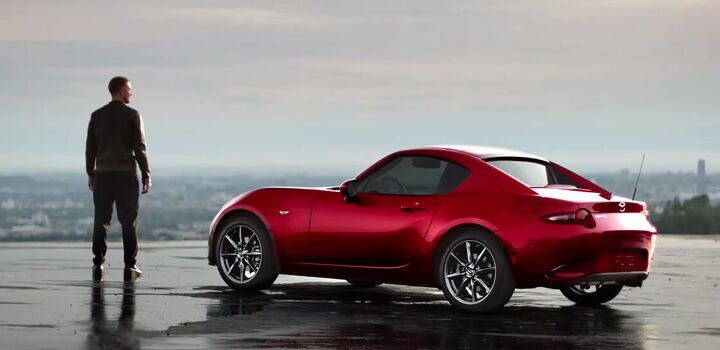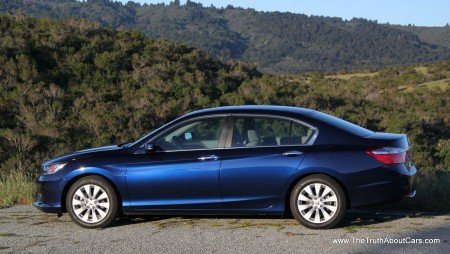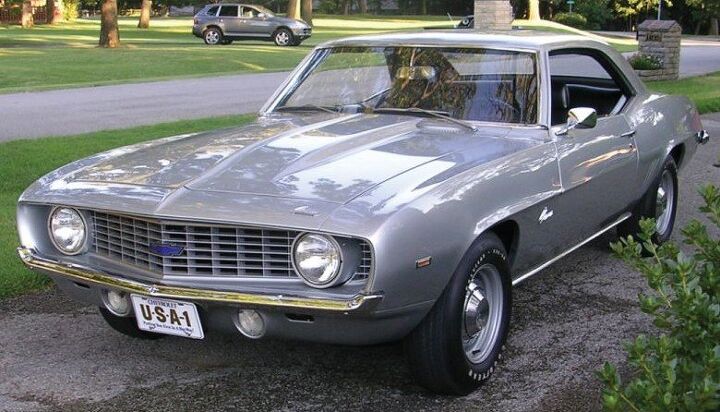#economics
QOTD: How Would Tariffs Impact the Automotive Industry?
Once again, I am going to borrow today's question of the day from one of our earlier posts. I like to do this because it gives you all another forum to give your opinion about any given topic, and sometimes we can pick a particular question from a certain story and really dig in.
Today, Matt wrote about presidential candidate/former president Donald Trump's rhetoric involving tariffs and the automotive industry.
Biden to Slash U.S. Fossil Fuel Emissions 52 Percent by 2030
Today President Joe Biden committed to cutting U.S. fossil fuel emissions up to 52 percent by 2030. His statement came during a virtual climate change summit with 40 world leaders.
Analysts: Recent Automotive Job Cuts Are Just the Beginning
Over the last six months, automakers have announced roughly 38,000 job cuts as part of global restructuring efforts. While such things are typically part of the normal ebb and flow of the industry, the ebb could be a prolonged one as manufacturers seek ways to mitigate the high cost of tech and figure out what their businesses should look like in the 21st century.
A litany of other issues are impacting jobs. China’s economy turned out to be less stable than presumed, trade tensions have escalated in practically every major market that builds cars, and most of the developed world appears to be nearly tapped out in terms of sales growth.
As a result, analysts are growing concerned that the layoffs we’ve seen thus far are just the beginning. But they’re not the only ones. Industry insiders are also willing to admit that times are changing — and rather drastically.
Attention, Plebs: New Cars Are Becoming Prohibitively Expensive
As new vehicle prices continue to climb, many wonder how high MSRPs can go before the public decides to take a pass — assuming they haven’t already. Sales growth is slowing, even in seemingly bulletproof markets like China. Even before this ominous backdrop unfurled, dealers were making noise about new car prices that had grown overly ambitious, claiming they couldn’t endure another period of sustained economic hardship.
Edmunds estimates that the average transaction price of a new vehicles reached $36,495 in December 2018 — a 3 percent increase compared to December of 2016 and a 13 percent increase compared to December of 2012. Taking that knowledge, Road & Track compiled a broader picture of the new-car market and where it might be going.
Spoilers ahead if you don’t want the unpleasant non-surprise ruined.
QOTD: Can You Hit 'em Where They Ain't? (Feeling Flush Edition, Pt. 3)
This week is the third and final installment of our QOTD series about cornering the used car market and finding the most bang for the buck.
We’re going all out for this finale, and giving you plenty of money to shop.
QOTD: Can You Hit 'em Where They Ain't? (Middle of the Market Edition, Pt. 2)
In last week’s Part 1 of this three-part QOTD series, we asked you to scan through the old brain box and offer up good examples of used cars for the budget-minded motorist, keeping your purchase within a stringent $8,000 budget. Today you’ll get a more generous sum of money, but you’ll also find yourself subject to heightened buyer expectations.
Let’s pick out some really tremendous used cars.
QOTD: Can You Hit 'em Where They Ain't? (Bottom of the Barrel Edition, Pt. 1)
This week marks the first of a three-part QOTD series where we’ll discuss everyone’s favorite topic here at TTAC: used cars. And for this first installment, we’re on a tight budget.
25 Years On, Are Cars Really More Expensive?
That’s the question that Marketplace is asking, using the Honda Accord as a yardstick. In 1989, a Honda Accord with 98-horsepower, no ABS, crank windows and no A/C. In 1989 dollars, that would set you back $11,700.
How Did Autos Fare In The US Economic Recovery?
I’m an economist, and do more than think about the industrial organization (IO: “structure, strategy, conduct and performance”) of the auto industry. Here I present overall employment data and then focus on the automotive component. For a recent item on inflation and interest rates see here at my blogspot blog, Autos and Economics.
QOTD: The Economics Of Ownership
$150 a week.
For some folks, this is a mere pittance. A lunch for four at a fancy restaurant that can be easily charged off to Uncle Sam and his seventeen trillion dollar debit card.
For others, it’s the beginning of a barnacle that will likely outlast their ability to pay it.
They will flex their muscles and run while they can. Then once they trip, due to a lost job or a family emergency, they will pick up an even heavier barnacle, with four wheels on it, and keep running.
It’s a vicious cycle of poverty. Where the poor always stay poor. After witnessing this cycle of automotive indebtitude for years on end, I’ve come to blame one solitary thing.
Generation Why: 2013 Even Worse For Young Car Buyers, But The Dream Is Still Alive
A study by Edmunds on the buying habits of millennials shows that 2013 was not a particularly good year for young car buyers. Despite making good headway in 2012, 2013 saw those gains practically eroded, as a weak job market and rising home prices helped stymie any growth in market share for automotive consumers aged 18-34.
Generation Why: No Job, No Money, No Car
“Too Poor To Drive”. This is the gut level conclusion that’s been propagated in “Generation Why” since January, 2012, long before the theory gained currency in the broader automotive world. In the nearly two years since, the “kids aren’t interested in cars because of technology/the environment/urbanization” meme has held up tenaciously – and it’s not entirely false.
Missed Opportunities: Forever A Day Late And A Dollar Short?
In 1991, I came back from Operation Desert Storm with a pocketful of money from the several months I had spent aboard an oil tanker as a part of the USS John F Kennedy battle group in the Red Sea. Like many young men flush with cash I was determined to shoot the works as fast as possible and so before my jet lag had even abated I took my nest egg on a tour of the local low-end car lots in search of some real old-fashioned Detroit muscle. It didn’t take me long to find something I liked, a well used 1969 Camaro with small block and a four speed, and I was ready to deal but the price on the windshield, $3200, stopped me cold. It was outrageous!
QOTD: Is Australia The Canary In The Coal Mine For Canada?
The latest round of bad news regarding the Australian domestic auto industry has shifted TTAC’s attention to Canada, another country burdened with some similar issues. If Australia’s own car industry is getting hammered, then how much longer does Canada have?
PSA Cuts More Jobs In France, Dacia Expands In Morocco
Peugeot is deepening job cuts at its French factories, with another 1,500 positions set to be made redundant as part of a massive cost-cutting effort. Meanwhile, rival automaker Renault is expanding its operations in Morocco as its Dacia brand continues to steamroll through the European market.





























Recent Comments